Affiliate disclosure: This post may contain affiliate links. Please see our Privacy Policy.
Who knew you could grow mushrooms on old clothing? Any scrap of clothing made from natural plant fibers (cotton, linen, hemp, and more) is a carbon-rich growing medium for mushrooms!
It’s a fun way to upcycle old clothes, but it’s also handy knowledge for surviving the aftermath of a disaster. Mushrooms are fast-growing protein-rich food, and knowing they can be produced from readily available debris could be handy someday!
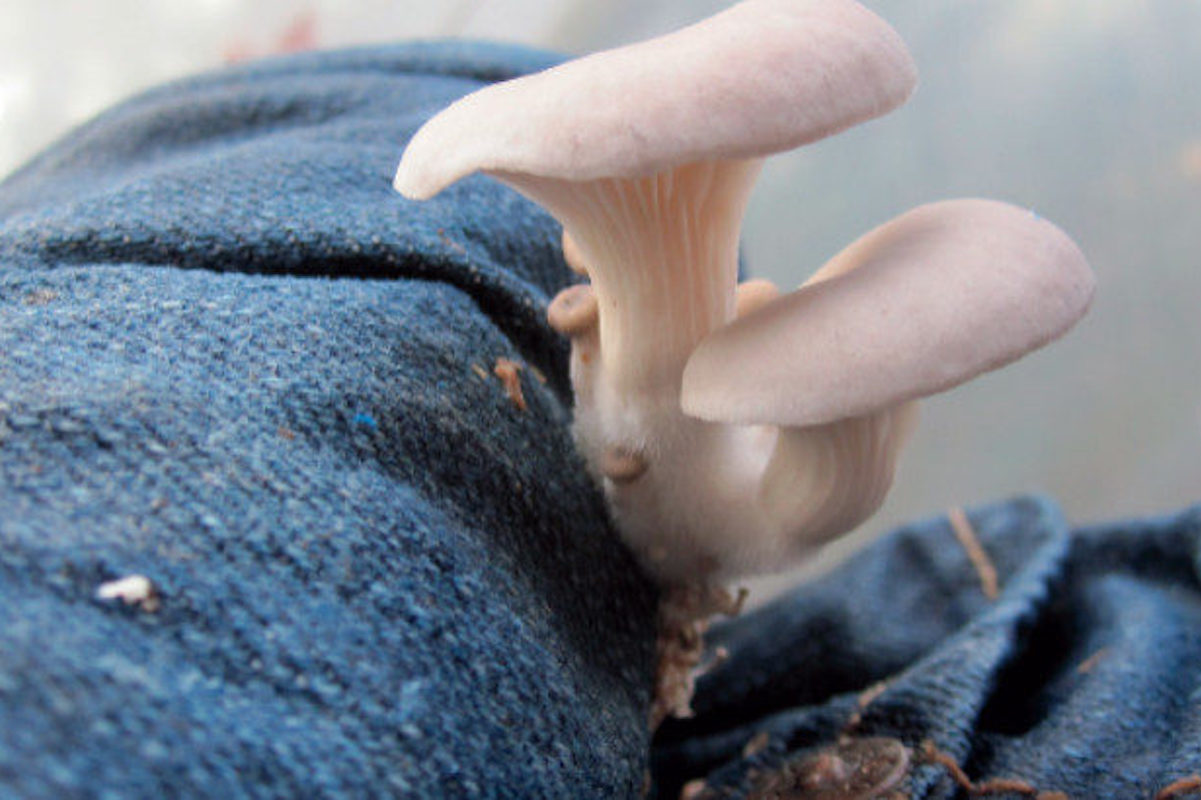
Growing mushrooms as a survival food? Really?
I’m an avid mushroom forager and mushroom grower, and I love deep dives into all things mycelium…both conventional and sometimes a little unconventional. We do plenty of unconventional mushroom projects here at home, including making mushroom ice cream with some of the most aromatic specimens the woods has to offer (chanterelles).
While chanterelle ice cream is delicious, it’s a stunt…and it’s not all that “useful” in the grand scheme of things, beyond impressing your friends.
Tradd Cotter, the author of one of my favorite mushroom books, also likes to go out on a limb and experiment, but his experiments are very focused and utilitarian. His book Organic Mushroom Farming and Mycoremediation has a whole section on “Schroomin’ Off the Grid,” where he talks through options for growing mushrooms from waste products, be it spent coffee grounds or old cardboard.
He was inspired by the work he did in the aftermath of the 2010 earthquake in Haiti, which all but reduced the island to rubble. There was plenty of rubble to be found, but very little food.
While he was there, he went to work converting heaps of debris into protein-rich food for the people, and trained them to do the same.
Mushrooms don’t generally get much attention as an emergency or survival food source, but you’d be surprised. He created kits that “Produced a food that is 20 to 30 percent protein (dry weight). In fact, over a fourteen-week period, oyster mushrooms produce almost double the amount of protein as free-range chickens!”
Those same mushrooms also helped to filter water, which was in short supply, and reduce the mosquito populations (which were spreading malaria).
“Working in areas where infrastructure is minimal, forcing us to use extremely low-tech methods of cultivation, has improved my understanding of and appreciation for the absolute minimum requirements of growing mushrooms productively and efficiently. In these ‘survival’ situations, I’m challenged to push the limits of what is possible to produce edible protein from garbage, paper, and other waste in just a few weeks. And it is possible. Given the knowledge and skills, just about any region in the world could build a thriving food production system using little or no infrastructure while improving local soil fertility by composting spent mushroom media.”
Tradd’s work is incredibly inspiring, and I’d encourage you to read his book if you’re at all interested in mushroom foraging or cultivation. I was so inspired, that I asked Chelsea Green Publishing if I could publish a small excerpt to share just one small “survival” mushroom project with you.
They graciously agreed, and I’m happy to share Tradd’s instructions for growing mushrooms on old jeans with you all.
(If you’re looking for a mushroom spawn for this project, it can be found here. He’s growing oyster mushrooms, which are some of the easiest to cultivate on simple mediums like this.)
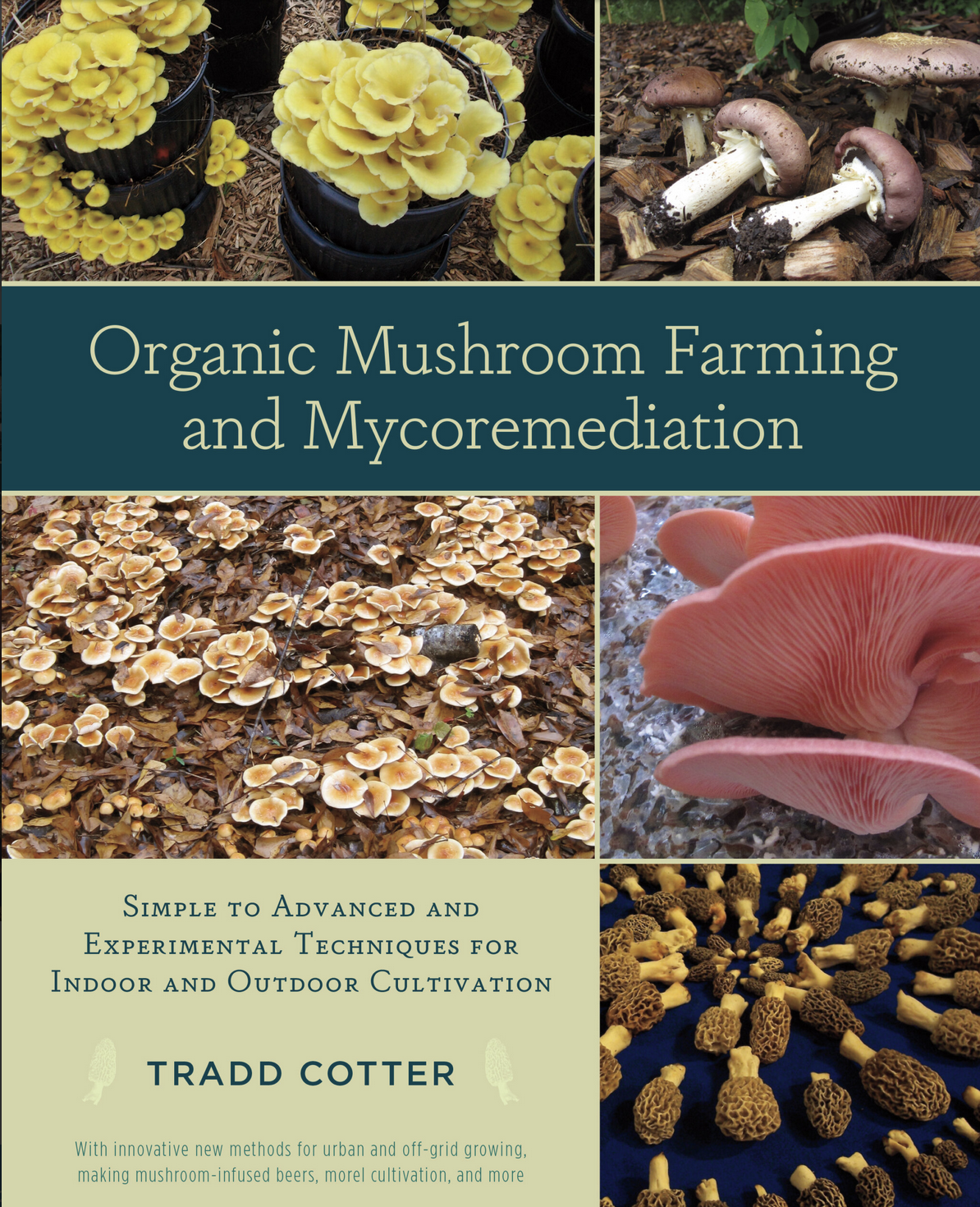
Reprinted with permission from Organic Mushroom Farming and Mycoremediation: Simple to Advanced and Experimental Techniques for Indoor and Outdoor Cultivation by Tradd Cotter. Chelsea Green Publishing, 2014. Photo credit: Tradd and Olga Cotter. It has been edited slightly for format and length to fit the web.
Cultivating Mushrooms on Clothing
My first experiment was a success, with oyster mushrooms colonizing and fruiting very well on old cotton jeans…what I learned is that old cotton clothing can support fruiting oyster mushrooms.
(This could be potentially valuable survival information for anyone directly impacted by a natural disaster, where there is a huge amount of debris, but food is scarce.)
Old cotton shirts, bits of rugs, hemp, and sisal rope—any material composed of natural plant fibers, including cotton, hemp, and bamboo, can be used to cultivate mushrooms. It only needs water and a bit of oyster mushroom mycelium to get started.
Step 1
Soak the clothing in fresh water. The water does not have to be sterile or clean, only free of heavy metals.
Step 2
Roll the clothing tightly, or if you have more than one article of clothing, stack it in spawned layers. (Oyster mushroom spawn is available here.) Place the clothing in a plastic bag or an enclosed container with a few holes.
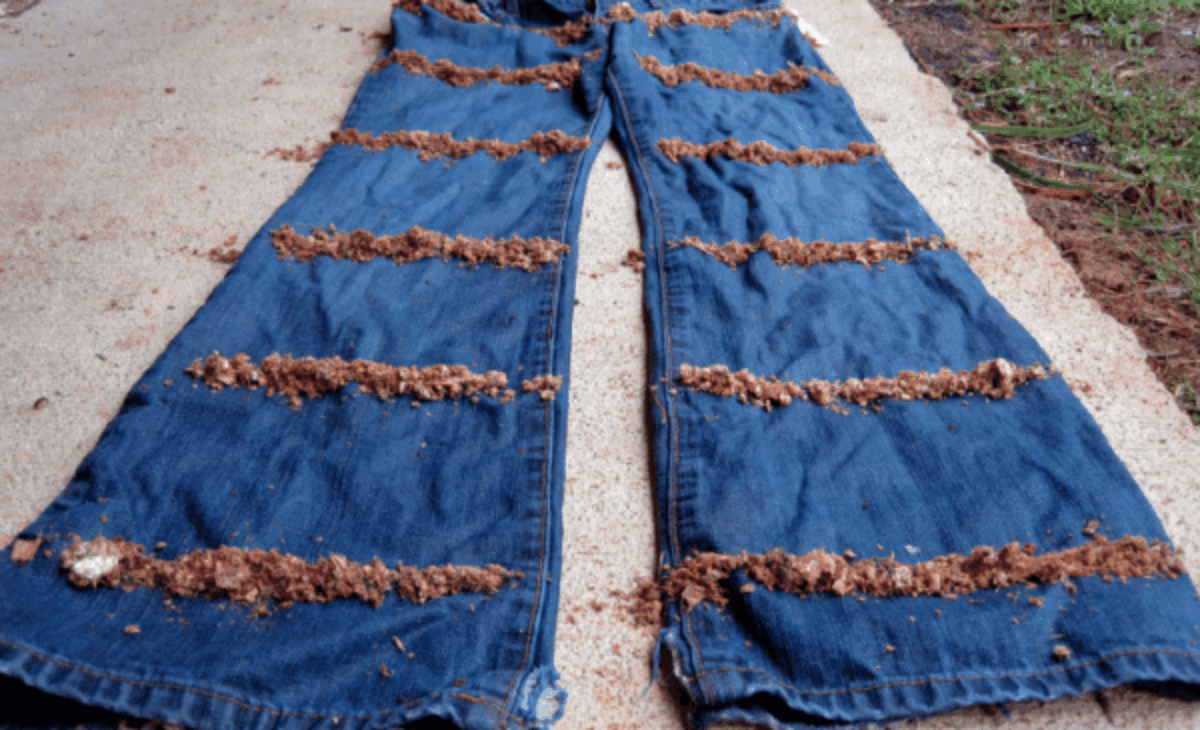
Step 3
Check the moisture content of the clothing every few days during colonization to make sure the fabric does not dry out; mist or water it as needed. Room temperature or cooler is perfectly fine for colonizing clothing scraps.
Step 4
When the entire mass of clothing seems to have been completely colonized by the mycelium, increase ventilation by adding more holes or cracking the lid of the container, but not enough that the clothing will quickly dry out. Keep the surfaces misted slightly to induce mushroom formation. The colonization process can vary from one to two weeks, depending on how much spawn you use. At this point, the mushrooms are not interested in fruiting so no light is needed to promote primordia formation.
Step 5
Once mushrooms begin to appear, which can occur a few days to weeks after colonization depending on temperatures and spawn amount used, they will double in size every day. Mist as frequently as needed to keep the mushrooms from drying out at a young state.
When the mushrooms stop growing, they are ready to harvest.
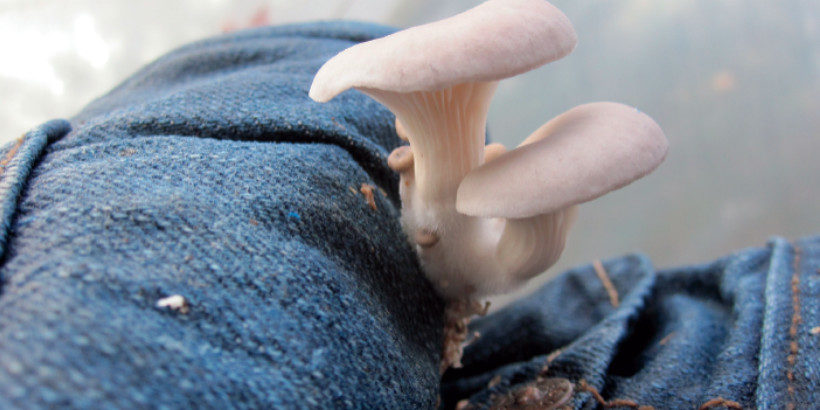
Growing Mushrooms at Home
Want to try growing mushrooms more conventionally?
- How to Grow Shiitake Mushrooms
- How to Grow Winecap Mushrooms
- Companion Planting Mushrooms with Strawberries
Survival Food Ideas
Looking for more ways to produce food in unorthodox ways? Whether surviving off-grid or producing tasty microgreens on your countertop, I’ve got you covered!
- Survival Gardening: Our Real Life Dry Run
- How to Grow Microgreens
- Planning an Emergency Food Supply for your Family
- How to Make Vinegar from Apple Scraps
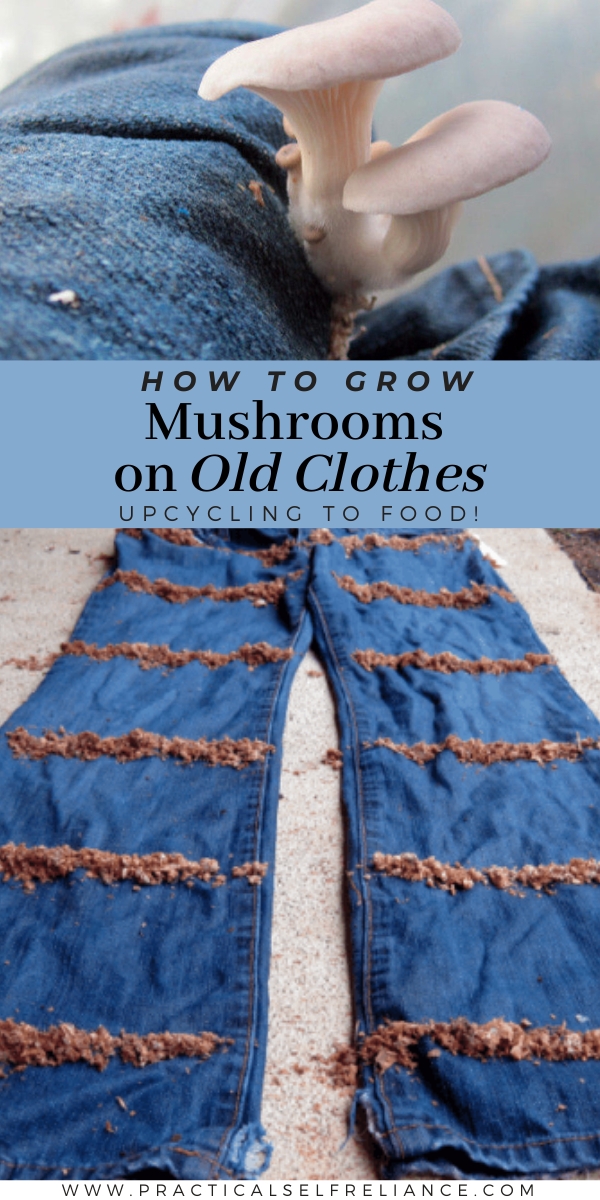
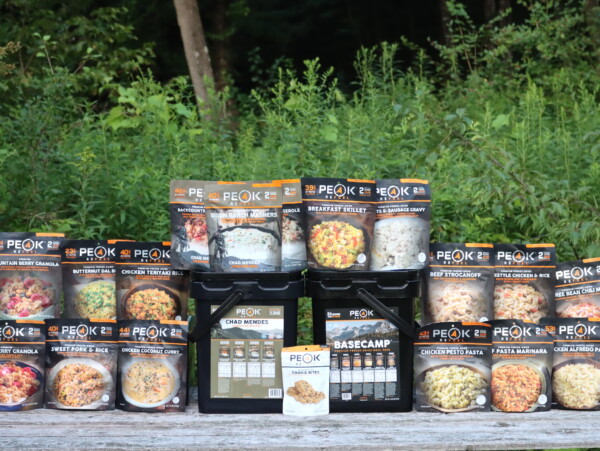
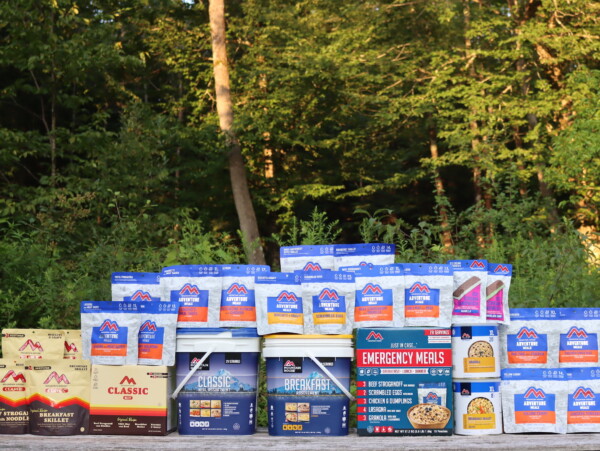
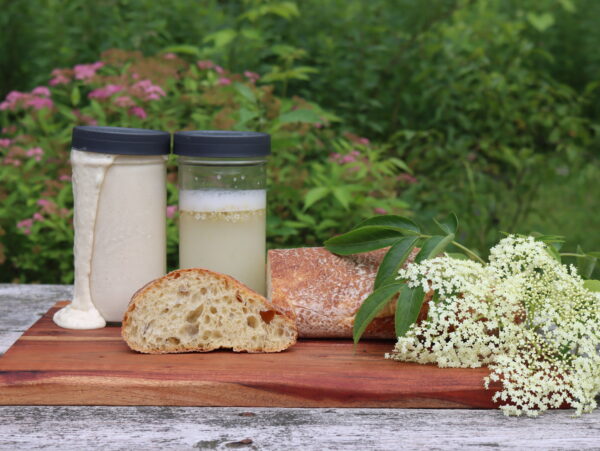
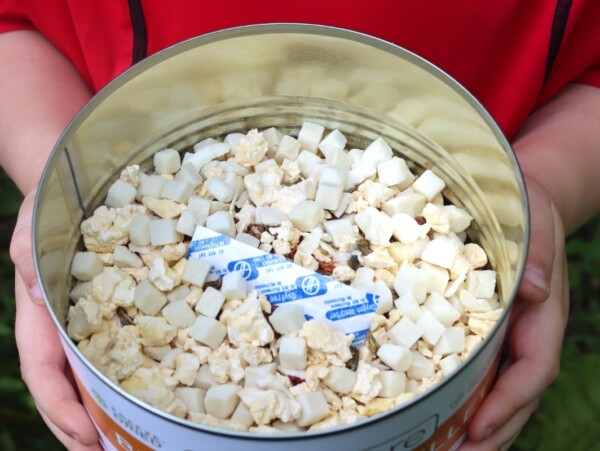










I love your articles! Just to let you know all of the links to the book do not work.
Thanks again for all the great information!
Thanks for the heads up, I fixed it!
Will the mushrooms keep producing indefinitely if you keep harvesting them?
They keep producing until they’ve tapped out all the nutrients from the food source, so it depends on what you grow them on. You should get quite a few good flushes off clothing, but I’d guess they’d produce for months (not years). Logs are much more nutrient dense as mushroom fodder, and they’ll produce for several years. Still, several months and multiple good flushes isn’t bad for a pair of old jeans.
Hi, would this also work with fabrics that are part natural fibers, part man-made? I.e. jeans will often have some polyester and/or elastane content. I bet the mushrooms will grow regardles; they’d be safe to eat, right?
At least according to Tradd Cotter, he tested specifically to see if they’re absorbing dyes or other compounds from the clothing, and they’re not. All they’re doing is converting the natural carbon into mushrooms. It should work with anything that’s mostly natural fiber (linen, cotton, etc)
Good to know! Thank you! 🙂
Is it possible to grow mushrooms at home without buying spawns again and again?
This method for growing shiitake mushrooms will give you mushroom logs that will produce about a pound of mushrooms a year for approximately 8 years. https://practicalselfreliance.com/grow-shiitake-mushrooms/ This post on growing winecap mushrooms teaches you how to innoculate woodchips in your garden for a lifetime supply of winecaps. https://practicalselfreliance.com/growing-winecap-mushrooms/
Where do you recommend purchasing ‘seed’?
Good question! We ge our mushroom spawn from North Spore, and you’ll need sawdust spawn for this project.